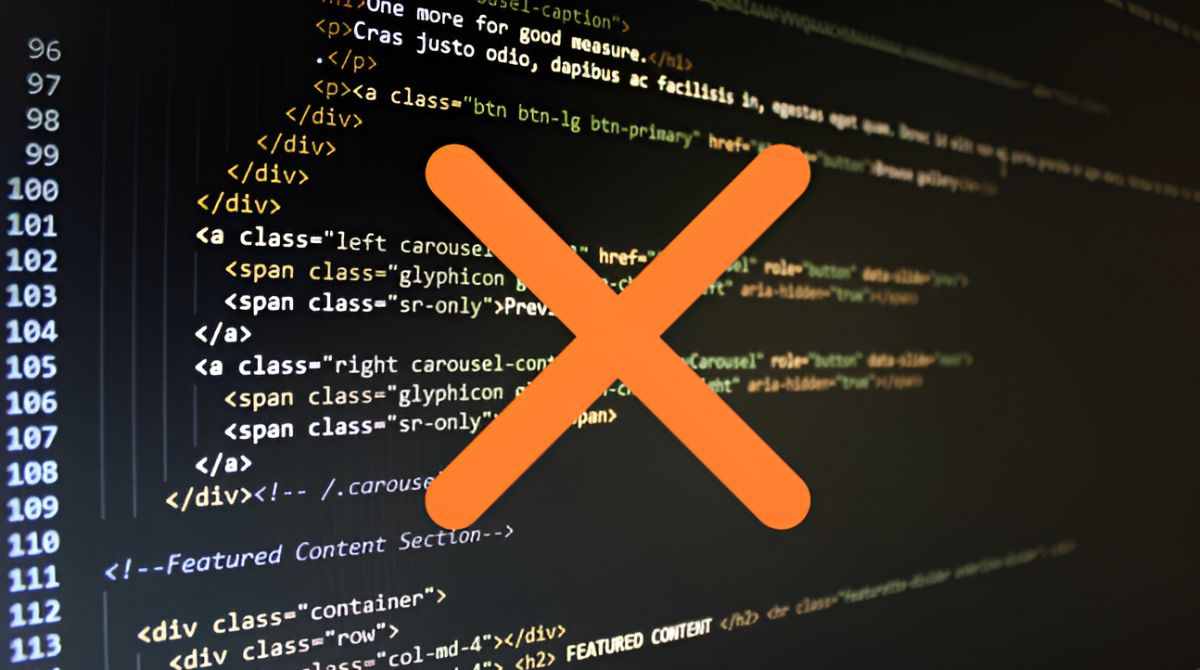Introduction
Welcome to the world of SaaS (Software as a Service) ideas! Are you a passionate entrepreneur looking to build a successful SaaS product? Or maybe you’re an aspiring innovator excited about the opportunities that the SaaS industry has to offer? No matter who you are, coming up with great SaaS ideas is the first step towards creating a profitable and scalable software product.
Software as a Service has revolutionized the way businesses operate and the way consumers access and use software. With the ability to deliver software over the internet, SaaS solutions are becoming increasingly popular due to their cost-effectiveness, flexibility, and ease of use.
However, coming up with a unique and valuable SaaS idea can be a daunting task. With so many players in the market, it’s important to find an idea that stands out from the crowd and solves a real problem for your target audience.
In this article, we will explore different strategies and techniques to help you generate innovative SaaS ideas. We will discuss how to identify problems and pain points, analyze market trends, research competitors, and speak to potential users. Additionally, we’ll delve into leveraging your expertise and passion, brainstorming techniques, and the importance of validating and testing your ideas.
This guide aims to provide you with a comprehensive roadmap to ideation and validation within the SaaS industry. By following these steps, you’ll be equipped with the tools and knowledge to develop a compelling and successful SaaS idea.
So, if you’re ready to dive into the world of SaaS ideation, let’s get started!
Understanding SaaS
Before diving into the process of generating SaaS ideas, it’s crucial to have a clear understanding of what SaaS is and how it differs from traditional software models.
Software as a Service (SaaS) is a software distribution model where applications are delivered over the internet and accessed by users through a web browser. Unlike traditional software that requires installation and maintenance on individual devices, SaaS eliminates the need for manual updates and provides users with a centralized and convenient platform.
One of the significant advantages of SaaS is its subscription-based pricing model. Instead of purchasing a software license upfront, users pay a recurring fee to access the software and its functionalities. This approach allows businesses to scale their software usage based on their needs and budget.
SaaS also offers benefits in terms of maintenance and support. Service providers are responsible for managing the infrastructure, ensuring the software’s performance, and delivering updates and new features regularly. This enables businesses to focus on their core activities without worrying about software maintenance.
Another key aspect of SaaS is its multitenant architecture. Multiple users and organizations can access the same instance of the software, sharing resources but maintaining data privacy and security through user-specific access controls. This shared infrastructure results in cost savings for both the service provider and the users.
Furthermore, SaaS products are typically designed to be highly scalable and customizable. As businesses grow, they can easily increase their subscription scope or add additional users without worrying about infrastructure limitations.
By understanding the unique characteristics and advantages of SaaS, you can better envision innovative ideas that leverage its capabilities. As you explore potential SaaS ideas, consider how your product can solve specific pain points, provide convenience, or optimize existing processes for your target audience.
Now that we have a solid understanding of SaaS, let’s move on to the next step – identifying problems and pain points that your SaaS idea could solve.
Identifying Problems and Pain Points
When it comes to developing a successful SaaS product, addressing a specific problem or pain point is paramount. By identifying the challenges and frustrations that your target audience experiences, you can create a solution that adds value and meets their needs.
One way to identify problems and pain points is through market research. Conduct surveys, interviews, or focus groups to gather insights from your potential users. Understand their day-to-day challenges, pain points, and frustrations in their work or personal lives. This will help you uncover opportunities for innovation and improvement.
Another approach is to analyze your own experiences or the experiences of people within your industry. Consider the repetitive tasks, manual processes, or inefficient workflows that you or your colleagues encounter. Look for pain points that can be streamlined or automated using a software solution.
Furthermore, keep an eye on industry trends and changes. Technological advancements, new regulations, or emerging market demands can create challenges that require innovative software solutions. By staying informed and proactive, you can uncover and address these newly arising pain points.
Customer feedback is also a valuable source of information. Pay attention to the feedback and reviews of existing software solutions in your industry. Look for common complaints, feature requests, or usability issues that can be addressed with a new and improved SaaS product.
One effective technique for identifying problems and pain points is “Jobs to be Done” analysis. This framework involves understanding the fundamental goals or “jobs” that customers are trying to accomplish. By identifying the roadblocks and hurdles that prevent them from achieving these goals, you can develop a solution that addresses their specific pain points.
Remember that the ultimate goal is to create a software solution that solves a real problem for your target audience. By identifying their pain points and understanding their needs, you can develop a compelling SaaS idea that provides a valuable and effective solution.
Now that we have explored the process of identifying problems and pain points, let’s move on to the next step – researching market trends to ensure that your SaaS idea aligns with the demands of the market.
Researching Market Trends
Researching market trends is a crucial step in developing a successful SaaS idea. It helps you understand the current state of the market, identify emerging opportunities, and ensure that your idea aligns with the demands and needs of your target audience.
Start by examining industry reports, market statistics, and forecasts specific to the software and SaaS sector. These resources provide valuable insights into the size of the market, its growth potential, and the key players within it. Additionally, they can highlight trends, such as the adoption of specific technologies or the emergence of new niche markets.
Another valuable source of information is competitor analysis. Study your direct and indirect competitors to understand the solutions they offer, their target audience, pricing models, and unique selling points. Analyze their strengths and weaknesses to identify gaps or opportunities for differentiation in the market.
Furthermore, keep an eye on technological advancements and innovations that can impact the SaaS industry. Stay informed about new technologies, platforms, or tools that can enhance your product’s capabilities or provide a competitive edge. For example, the rise of artificial intelligence (AI) and machine learning (ML) has opened up new possibilities for SaaS solutions in various industries.
Additionally, stay connected with your target audience and industry influencers through social media, forums, and industry-specific communities. Engage in discussions, monitor conversations, and participate in relevant events or conferences. This will give you firsthand insights into the challenges and demands of your potential users.
Remember to validate your research findings with real data and evidence. Don’t rely solely on anecdotal or hypothetical information. Look for concrete data, user feedback, and case studies that support the market trends and emerging opportunities you’ve identified.
By thoroughly researching market trends, you can ensure that your SaaS idea is targeted towards a viable and growing market. It allows you to position your product strategically, differentiate yourself from competitors, and capitalize on emerging opportunities.
Now that we have explored the importance of researching market trends, let’s move on to the next step – analyzing competitors in more detail to gain a competitive advantage in the SaaS industry.
Analyzing Competitors
Competitor analysis is a critical step in developing a successful SaaS idea. It allows you to understand the landscape of your industry, identify your strengths and weaknesses, and uncover opportunities for differentiation. By analyzing your competitors, you can gain valuable insights and build a competitive advantage in the SaaS market.
Start by identifying your direct competitors – those who offer similar solutions to yours and target the same audience. Study their product offerings, features, and pricing models. Understand what sets them apart and makes them successful. Look for gaps or areas where you can provide a better solution or improve upon existing features.
Next, analyze your indirect competitors – those who may not offer the same solution but cater to a similar audience or solve similar problems. Explore how they position themselves in the market and what strategies they employ. This can provide inspiration and insights into alternative approaches or untapped markets.
Study your competitors’ marketing strategies, including their website, social media presence, content marketing efforts, and advertising campaigns. Understand how they engage with their audience, the messaging they use, and the channels they leverage. This can help you refine your own marketing strategy and discover unique ways to reach and connect with your target audience.
Pay attention to customer reviews, testimonials, and feedback for your competitors’ products. Understand what customers appreciate the most and where there may be areas for improvement. This information can guide you in developing a product that caters to the specific needs and preferences of your target audience.
Analyze your competitors’ pricing models and pricing strategies. Consider how you can differentiate yourself in terms of pricing structure, value-add features, or pricing packages. Assess whether there is room in the market for a more affordable or premium option.
Additionally, keep an eye on the partnerships and integrations that your competitors have formed. Explore potential partnerships that can strengthen your product offering or expand your reach. This can help you forge valuable alliances and create a more comprehensive solution for your customers.
Remember that competitor analysis is not about copying or replicating what your competitors are doing. Instead, use it as a source of inspiration and insights to build a unique value proposition and differentiate yourself in the market.
Now that we have explored competitor analysis, let’s move on to the next step – speaking to potential users and gaining firsthand insights into their needs and preferences.
Speaking to Potential Users
Engaging with potential users is a crucial step in the process of developing a successful SaaS idea. By directly speaking to your target audience, you can gain valuable insights into their needs, preferences, and pain points. This information will guide you in creating a solution that truly meets their requirements.
Start by reaching out to individuals or businesses who fit your target demographic. This can be done through interviews, surveys, focus groups, or by attending industry-specific events or meetups. Ask open-ended questions that encourage participants to share their thoughts and experiences related to the problem you’re aiming to solve.
During these interactions, focus on listening more than talking. Allow potential users to express their challenges, frustrations, and desires openly. Pay attention to the language they use, the specific pain points they mention, and the underlying emotions associated with their experiences. This will help you unearth valuable insights that might not be apparent through quantitative data alone.
Moreover, consider conducting usability tests or offering prototypes or demos of your potential SaaS solution. This will enable you to gather feedback on the user experience, interface, and functionality. Incorporate this feedback into the development process to ensure that your final product addresses the specific needs of your target audience.
It’s also beneficial to engage with potential users through online communities, social media groups, and forums. Participate in discussions, ask questions, and share your knowledge. This will not only provide you with a deeper understanding of their pain points but also establish your presence as an expert in the field.
Remember that every interaction with potential users is an opportunity to learn and gather insights. Approach these conversations with curiosity and empathy, and be open to challenging your assumptions. By truly understanding your target audience, you can develop a SaaS product that solves their problems in a meaningful and effective way.
Now that we have explored the importance of speaking to potential users, let’s move on to leveraging your expertise and passion to develop a compelling SaaS idea.
Leveraging Your Expertise and Passion
When it comes to developing a compelling SaaS idea, leveraging your expertise and passion can make all the difference. Your unique knowledge and skills can set you apart in the market and help you create a product that stands out from the crowd.
Start by identifying your areas of expertise and passion. What industries, technologies, or domains do you have extensive knowledge and experience in? By focusing on these areas, you can build upon your existing skills and leverage your expertise to develop a targeted and high-quality SaaS solution.
Consider the pain points and challenges you have encountered personally or observed within your industry. What aspects of your expertise can you apply to address these issues? Your deep understanding of the industry can give you a competitive advantage in developing a solution that truly meets the needs of the users in that specific field.
Passion is equally important. When you’re enthusiastic and passionate about the problem you’re solving, it will fuel your commitment, creativity, and resilience throughout the product development process. Passion can be contagious and attract others who share the same enthusiasm, including potential customers, employees, or investors.
Moreover, being an expert in your chosen field allows you to stay ahead of the curve in terms of industry trends, emerging technologies, and customer demands. This knowledge can help you identify innovative opportunities and develop a product that is not only functional but also aligned with the evolving needs of your target audience.
Don’t be afraid to showcase your expertise and passion through thought leadership, content creation, or public speaking engagements. Positioning yourself as an expert in your field can help build trust and credibility with potential users and investors.
Remember that leveraging your expertise and passion doesn’t mean you have to do it all alone. Surround yourself with a diverse team that complements your skills and brings different perspectives to the table. Collaborate with others who share your passion and can contribute to the development and success of your SaaS idea.
By leveraging your expertise and passion, you can develop a compelling and differentiated SaaS idea that resonates with your target audience. Your deep knowledge, combined with your genuine enthusiasm, will guide you in creating a product that truly meets the needs of your users.
Now that we have explored the importance of leveraging your expertise and passion, let’s move on to brainstorming and idea generation techniques to spark creativity in developing your SaaS idea.
Brainstorming and Idea Generation Techniques
Brainstorming and idea generation are essential steps in developing a successful SaaS idea. This process allows you to tap into your creativity, explore different possibilities, and generate innovative solutions. Here are some techniques to help you generate fresh and compelling SaaS ideas:
1. Mind Mapping: Start with a central concept or problem and branch out ideas related to different aspects of it. This visual technique helps you identify connections, explore different angles, and expand your thinking beyond conventional solutions.
2. SCAMPER: Use the SCAMPER technique, which stands for Substitute, Combine, Adapt, Modify, Put to another use, Eliminate, and Reverse. Apply each concept to your target problem or industry to trigger new insights and potential SaaS ideas.
3. Random Word Association: Generate a list of random words and brainstorm how each word could relate to your target problem or industry. This technique encourages lateral thinking and can lead to unexpected and creative solutions.
4. Reverse Thinking: Instead of focusing on how to solve a problem, consider how to make it worse or create the opposite effect. This approach challenges assumptions and helps you think outside the box to generate unique SaaS ideas.
5. Idea Combination: Take two or more existing concepts or technologies and explore how they can be combined to create a new and innovative SaaS solution. Look for synergies or areas where integration could solve a problem or provide a unique value proposition.
6. Customer Journey Mapping: Map out the entire journey of your target users and identify pain points or areas of improvement. Consider how a SaaS solution could enhance each step of the journey and create a more seamless and satisfying experience.
7. Analogous Thinking: Look for inspiration outside of your industry and explore how similar problems have been solved in other fields. This cross-pollination of ideas can spark creativity and lead to innovative solutions for your SaaS product.
During the brainstorming process, quantity is key. Encourage a free flow of ideas without judgment, and aim to generate as many ideas as possible. Afterward, evaluate and refine the ideas, considering feasibility, market demand, and alignment with your expertise and passion.
Remember, creativity can be fostered through a supportive and collaborative environment. Involve team members, mentors, or industry experts in the brainstorming process to gain diverse perspectives and foster a culture of innovation.
Now that we have explored various brainstorming and idea generation techniques, let’s move on to the importance of validating and testing your SaaS idea to ensure its viability and success.
Validating and Testing Your Ideas
Validating and testing your SaaS ideas is a crucial step in the development process. It allows you to gather real-world feedback, assess market demand, and refine your concept to ensure its viability and success. Here are some approaches to validate and test your SaaS ideas:
1. Conduct Market Surveys: Create surveys to gather feedback from your target audience. Ask specific questions about their needs, pain points, and preferences related to your SaaS idea. Analyze the survey results to identify trends, validate assumptions, and make data-driven decisions.
2. Develop a Minimum Viable Product (MVP): Build a simplified version of your SaaS product that showcases its core functionalities. Release it to a select group of early adopters or beta testers who can provide feedback and help validate its usefulness. Incorporate their feedback to refine and improve your product.
3. Seek Expert Feedback: Reach out to industry experts, mentors, or advisors who can provide valuable insights and guidance. Share your SaaS idea with them and seek their feedback on its market potential, uniqueness, and feasibility. Their expertise can help you refine your concept and avoid potential pitfalls.
4. Analyze Competitor User Reviews: Dive deep into user reviews of your competitors’ products. Identify common user complaints or unmet needs that your SaaS solution can address. Use this feedback to shape your product roadmap and ensure that it offers a superior user experience.
5. Build a Landing Page: Create a landing page that explains the value proposition of your SaaS idea and captures user interest. Drive targeted traffic to the landing page and monitor engagement metrics such as click-through rates and conversion rates. This can provide insights into the demand and interest for your product.
6. Create Prototypes: Develop interactive prototypes or wireframes that simulate the user experience of your SaaS product. Gather user feedback through usability testing sessions to identify any usability issues or areas for improvement.
7. Seek Partnerships: Explore potential partnerships with complementary businesses or industry influencers. Collaborating with established players can help validate your product concept and gain early market traction through their network and customer base.
Remember that the goal of validation and testing is to iterate and refine your SaaS idea based on real-world feedback. Be open to constructive criticism and be willing to pivot if necessary. Continuously validate, iterate, and improve your concept to ensure that it aligns with market demands and provides value to your target audience.
Now that we have explored the importance of validating and testing your SaaS ideas, let’s move on to the next steps – building a Minimum Viable Product (MVP) and bringing your SaaS idea to life.
Building a Minimum Viable Product (MVP)
Building a Minimum Viable Product (MVP) is a critical step in the development of your SaaS idea. An MVP is a simplified version of your product that includes only the core features necessary to address the primary problem or pain point. It allows you to test your concept in the market, gather feedback, and make informed decisions for further product development. Here are the key steps to building an MVP:
1. Define your Core Features: Identify the essential features that directly address the main problem your SaaS idea aims to solve. Focus on functionality that provides the most value and sets your product apart from competitors. This will ensure that you deliver a viable solution to your target audience.
2. Develop a User-friendly Interface: Design an intuitive and user-friendly interface for your MVP. Keep it simple and easy to navigate, ensuring that users can easily understand how to use the product and achieve their desired outcomes. A well-designed interface enhances the overall user experience.
3. Prioritize Functionality: Prioritize the development of the core functionalities over additional features. This allows you to launch your MVP quickly and start gathering user feedback as early as possible. As you receive feedback, you can iterate and add new features based on user needs and demand.
4. Test and Validate: Release your MVP to a limited group of early adopters or beta testers. Monitor their usage patterns, gather feedback, and analyze their responses. This feedback will help you validate your assumptions, identify areas for improvement, and make informed decisions about further product development.
5. Iterate and Refine: Based on user feedback, continuously iterate and refine your MVP. Prioritize the enhancements and modifications that provide the most value to your users. Regularly release updates to address user needs and ensure that your product continues to evolve based on market demands.
6. Continuously Gather User Feedback: Maintain an open and consistent line of communication with your users. Encourage them to provide feedback on their experience using the MVP and listen to their suggestions for improvement. This feedback will help shape the future development and direction of your product.
7. Plan for Scalability: Plan your MVP with scalability in mind. Ensure that the underlying infrastructure and architecture can handle increased user load and data volumes as your product gains traction. This will help in avoiding significant technical challenges and ensure a seamless user experience as your user base grows.
Building an MVP allows you to validate your SaaS idea, minimize risks, and iteratively improve your product based on real data and user feedback. Remember, an MVP is not the final product, but a starting point on your journey towards creating a successful SaaS solution.
Now that we have explored the process of building an MVP, it’s time to reflect on the insights gained and plan for the next steps in bringing your SaaS idea to fruition.
Final Thoughts and Next Steps
Congratulations! You’ve now gained a solid understanding of the process involved in coming up with SaaS ideas. From understanding the SaaS model to identifying problems and pain points, researching market trends, analyzing competitors, and leveraging your expertise and passion, you’ve laid the foundation for a compelling and successful SaaS product.
As you move forward, here are some final thoughts and next steps to consider:
1. Refine Your Idea: Take the insights and feedback gathered from the validation and testing stage to refine and enhance your SaaS idea. Incorporate user feedback, iterate on the MVP, and continue to align your product with market needs.
2. Develop a Roadmap: Create a roadmap for your SaaS product that outlines the key milestones, features, and development phases. This will help you prioritize tasks, set deadlines, and guide your product’s evolution.
3. Build a Talented Team: Surround yourself with a skilled and dedicated team that complements your expertise. Assemble a team that can contribute to the development, marketing, and sales efforts required to bring your SaaS product to market.
4. Secure Funding: Evaluate your funding needs and explore different options to secure the necessary financial resources. This may include self-funding, seeking investors, or applying for grants or funding programs specific to the software industry.
5. Develop a Marketing Strategy: Create a comprehensive marketing strategy to promote your SaaS product. Define your target audience, craft a compelling value proposition, and identify the most effective channels for reaching and engaging with your potential customers.
6. Monitor and Adapt: Once your product is live, closely monitor its performance and user feedback. Stay agile and be prepared to make adjustments based on market trends, customer demands, and new opportunities that arise.
7. Seek Continuous Improvement: Strive for continuous improvement and innovation. Regularly update and enhance your SaaS product based on user feedback, industry trends, and technological advancements. Aim to provide a superior user experience and stay ahead of the competition.
Remember, the journey of bringing a SaaS idea to life involves constant learning, adaptation, and perseverance. Embrace challenges as learning opportunities, stay curious, and remain passionate about solving the problems of your target audience.
With the right mix of strategy, creativity, and determination, your SaaS idea has the potential to make a significant impact in the market. Stay focused, stay motivated, and bring your vision to reality!

























